
| Harcourt | 90 Miles 14 Chains 69 Links / 140.137 km | Kangaroo Flat |
In 1840 a large pastoral run was taken up along Bullock Creek, to the North West of Mount Alexander, and was known as the ‘Mount Alexander North run’. Around 1857 the name of Ravenswood was adopted for it, the inspiration likely being the reference to the ‘House of Ravenswood’ in the novel ‘The Bride of Lammermoor’, a Sir Walter Scott novel, published in 1819.
During construction of the Melbourne, Mount Alexander & Murray River Railway, a small settlement existed adjacent to the new railway, about a mile south of the homestead. As well as being an encampment for many of the workers on the project, the ‘Government Resident Engineer’, a Mr Macarthy, also had his residence here. The ensuing station also logically took on the name Ravenswood.
The first passenger carrying train to traverse this portion of the line was on the evening of Saturday, October 4 1862. It conveyed a deputation of Councillors from Sandhurst, returning from a meeting at Castlemaine, for the purpose of determining the arrangements for the line’s official opening. The train was paused at Ravenswood overnight, as it wasn’t until half-past ten the following morning that the last of the track work near Kangaroo Flat was completed enough, to allow the train to proceed through to and terminate there, (several more days elapsed before the rails were connected right through to Sandhurst). On Monday, October 20 1862, amidst much celebration, the line through to Sandhurst (Bendigo) was officially opened for traffic.
The station of Ravenswood was opened for passenger traffic on February 1 1863. No records as to the extent of the original facilities provided here, or their precise location, have as yet surfaced. It is suspected, however, that the siding existed here from the outset, connected only to the down line via a trailing set of points on the Up side of the Public Crossing Road (PCR).
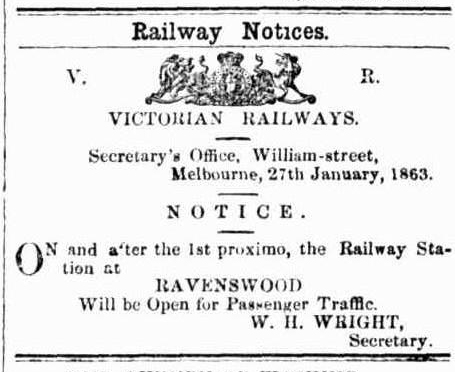
Commencing at least as early as March 1863, Ravenswood became a popular destination for organised picnic outings. On festive occasions, such as Easter and Christmas, special trains were regularly run from Bendigo and Castlemaine to ferry the revellers. A field adjoining “springs of fresh running water” on Gibson’s Creek, a little over half a mile to the northeast of the station, played host to many of these events. To the west of the line, and south of the roadway, another field ran down to the banks of Bullock Creek. This too was a popular venue, particularly in later years.
Early on the afternoon of January 28 1873, while the Station Master was at his house having dinner, (some 300 to 400 yards from the station), a fire broke out which completely destroyed the wooden station building. Three years later, presumably, due to insufficient patronage, the station was closed to all traffic, effective from March 2 1876.
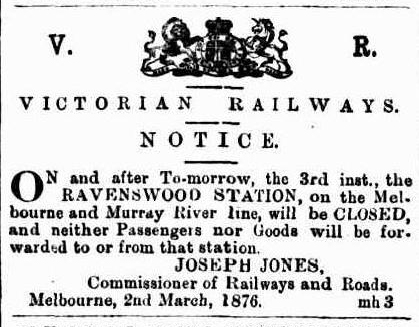
On March 10 1882, Ravenswood residents formally asked that the station be re-opened as a Flag station. “Open it” was the response from the then Commissioner for Works and Railways, Thomas Bent, and instructions were issued on April 18 1882, for the provision of a passenger platform and booking office on each side of the line. These were to be located on the north side of the PCR and the estimated cost was £200. Further instructions were issued on June 17, for the provision of two semaphore signals. Correspondence during November advised that a Gatehouse would also be required, once the urinals and semaphores were completed. By December 16 1882, all the work including a Station Master’s office was finished, and the station re-opened for passengers and light goods on Christmas Day.
On August 8 1884, work on the installation of a new cross-over was completed, providing access to the siding from the Up line at the south end.
Signalling alterations in preparation for the introduction of Block Working were undertaken in 1889. Two new Home signals were provided, one Up and one Down, and the existing semaphores were converted to Distant signals. This work was completed on November 19.
By March 3 1890, Winters Block was in use in both directions to both Harcourt and Kangaroo Flat. From April 25 1910, Ravenswood began to be temporarily switched out as a Block Post from 5:00 am on Sundays until 5:00 am on Mondays. Under this arrangement at that time, the Block section became Castlemaine B box to Bendigo A box. Over the years, the hours the station was ‘switched in’ varied considerably. They were reduced down to limited hours on Mondays to Fridays only, from September 11 1961. These times were also varied regularly until Ravenswood was closed altogether as a Block Post on June 19 1989.
By the middle of 1899, non-interlocked Up and Down Home, Starting and Distant signals were all in use. At the Down (north) end, the Up Home and Down Starting signals were mounted on the same post, on the Up (east) side of the line. On July 15 1907, they were relocated to the Down (west) side, and also moved 40 yards further out. On November 06 1911, a new co-acting signal was provided for the Up Distant signal, opposite the existing post on the other side of the line.
Instructions were issued on May 26 1905, to remove Gatehouse No 26 from Prairie, and re-erect it as a Porter’s residence at Ravenswood. The following year, on August 2, there were also instructions to remove number 880 gatehouse near Greenhill, and re-erect it at Ravenswood as a Departmental Residence (DR).
On the night of October 21 1907, Ravenswood was the scene of a serious accident. Three loaded sheep trucks and a Guards van, which had broken away from a train ascending Porcupine Hill towards Melbourne, careered back down the line and smashed into a following train waiting in the station. A drover accompanying the livestock, who was apparently asleep in the Guard’s van, was fatally injured.
A set of quadrant levers was located at ground level, adjacent to the Up end of the Down platform. On September 2, 1926, an extra quadrant lever was provided on the Up platform to control the Up Home signal.
On November 28, 1928, the Stationmaster was withdrawn. From that time, the station was worked under Caretaker conditions, supervised by the Station Master at Harcourt. It was announced on April 06 1970, that the staff were to be withdrawn and the location would be worked under No-one-in-Charge conditions, but this order was subsequently cancelled. However, the reprieve was very short-lived and the station was closed to all passengers on August 30 1970. Although it became No-one-in-Charge again, it remained open for goods traffic.
On February 28 1971, the connection from the Up line to the siding at the Up end was removed, and baulks were fitted in lieu. The Up platform was also abolished shortly after, on April 30 1971, together with the quadrant lever and its control over the Up Home signal.
On June 12 1979, a new Co-acting signal was provided for the Down Distant signal on the opposite (Up) side of the line.
On June 19 1989, when the station was abolished as a Block Post, all the signals were also abolished and points were spiked for the main line. The quadrant levers were removed for re-use at Woodend.
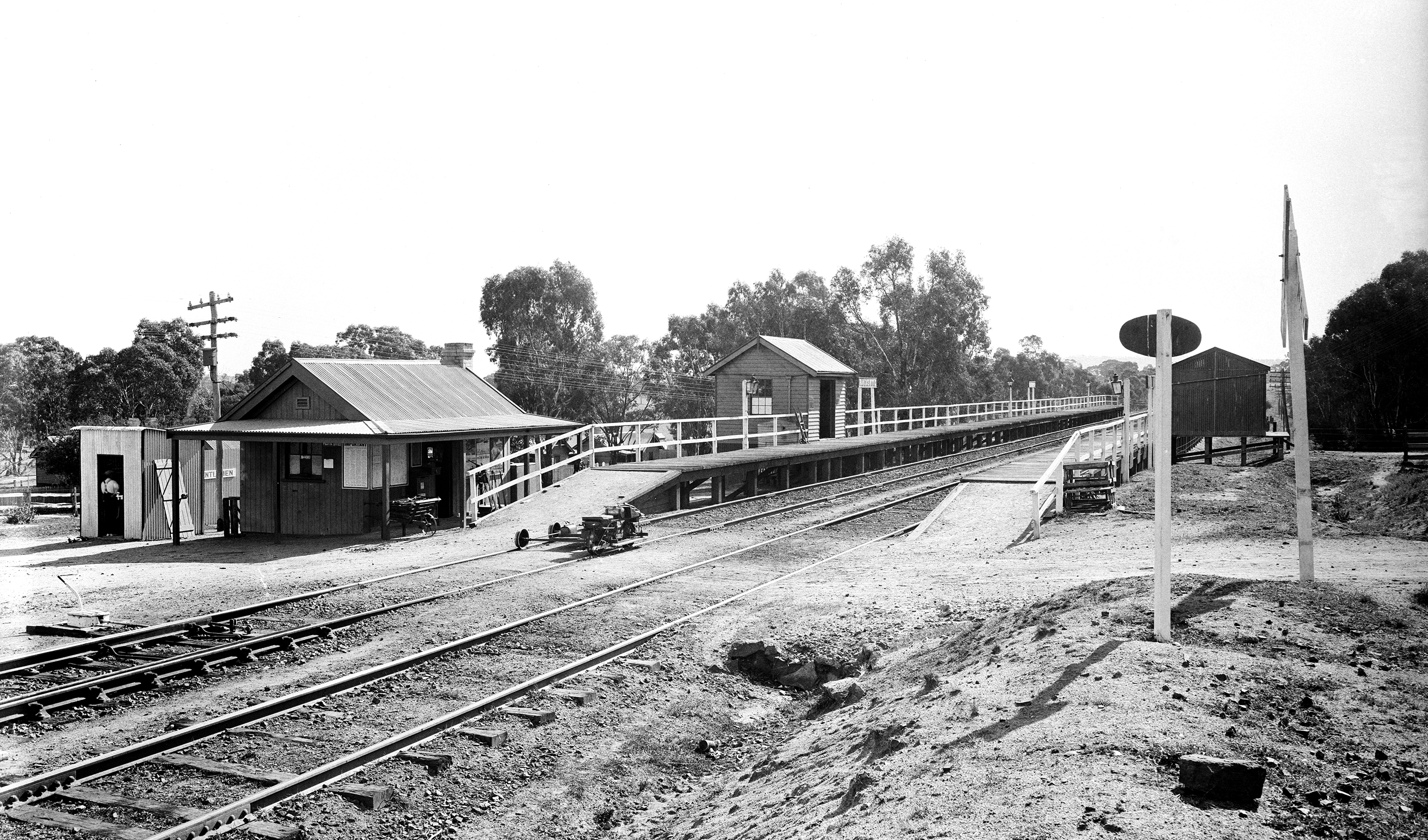
ABOVE: A circa 1930s view of Ravenswood looking towards Bendigo. As can be seen from the photo below, not much changed in the intervening 40 years.
(Photograph courtesy of PROV)
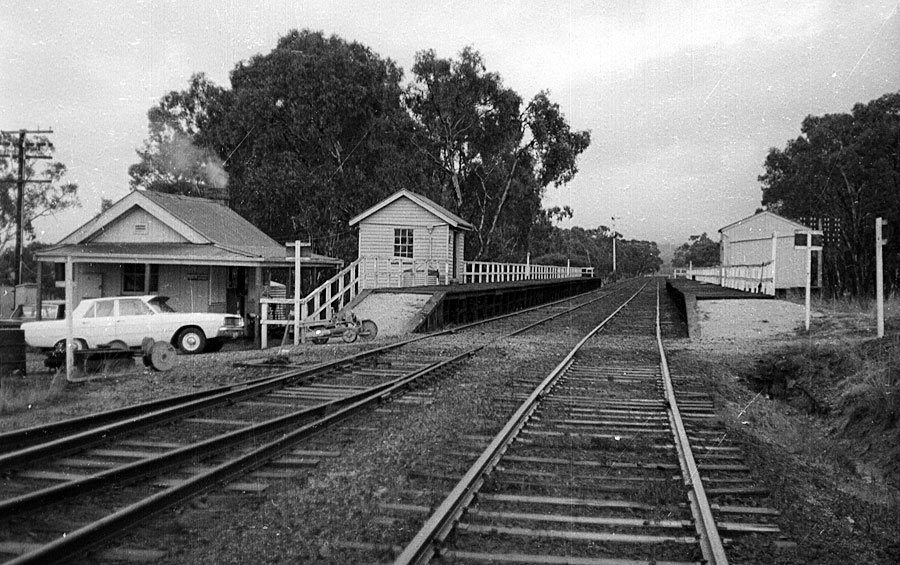
ABOVE: Ravenswood was opened by 1874, 12 years after the Bendigo line was opened, in contrast to practically all the stations on the Bendigo line which were grandiose affairs built with bluestone, Ravenswood would have looked at home on any branchline with its timber platforms and sad little office/signalbox. This view is looking towards Bendigo. The up platform was abolished during April 1971, photo date 1970.
(Photograph courtesy David Langley)
BELOW: The same view taken 38 years later, Oct. 2008.
(Photograph courtesy Chris Wurr)
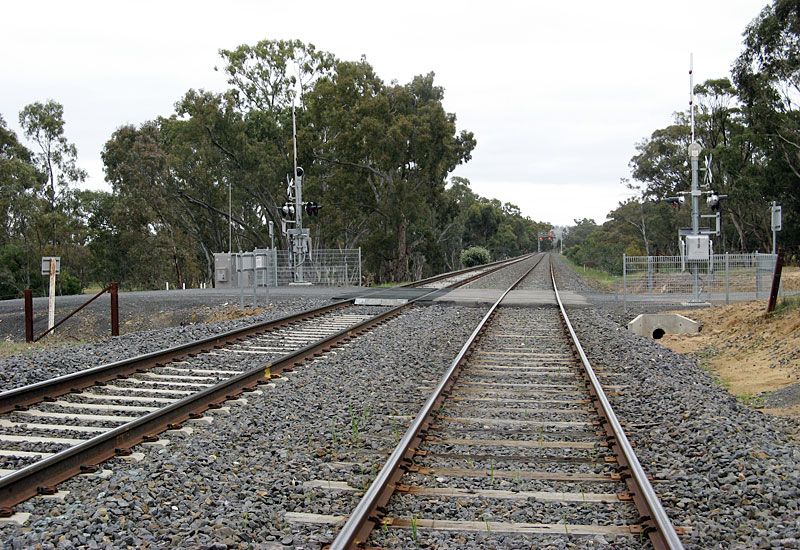
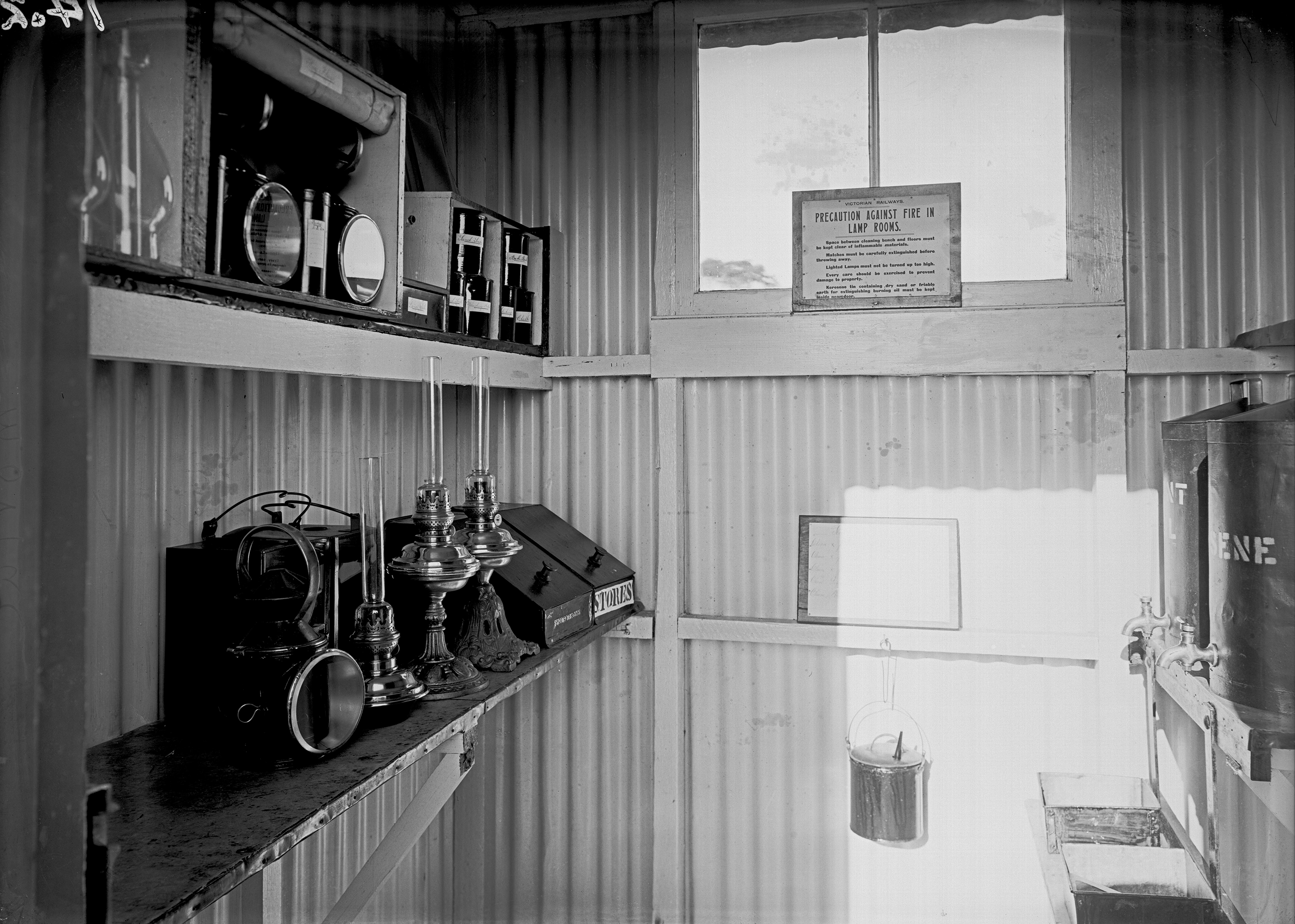
ABOVE: A 1930s look inside the Lamp Room at Ravenswood.
(Photograph coutesy of PROV)
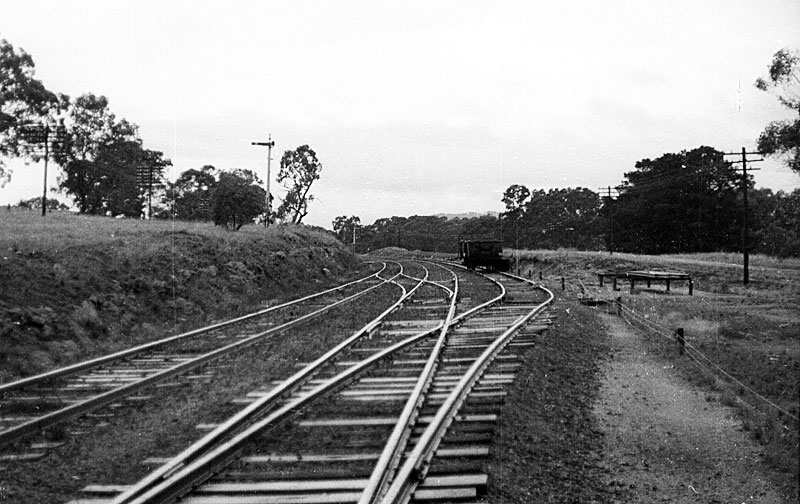
ABOVE: In true double line tradition the crossover was a trailing type. This view is looking towards Melbourne. The entire location lasted until June 1989, when it was disetablished as a block post and all signals were abolished.
BELOW: The same view taken 38 years later, Oct. 2008
(Photograph courtesy Chris Wurr)
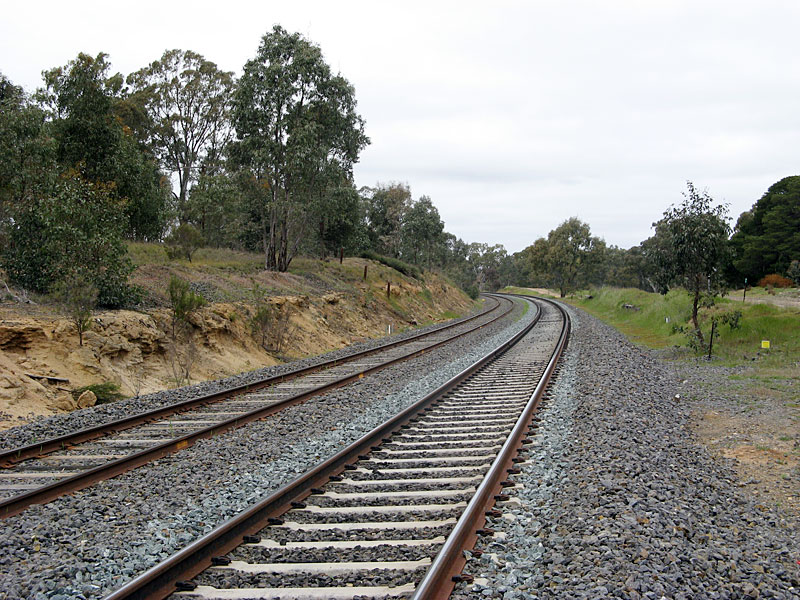
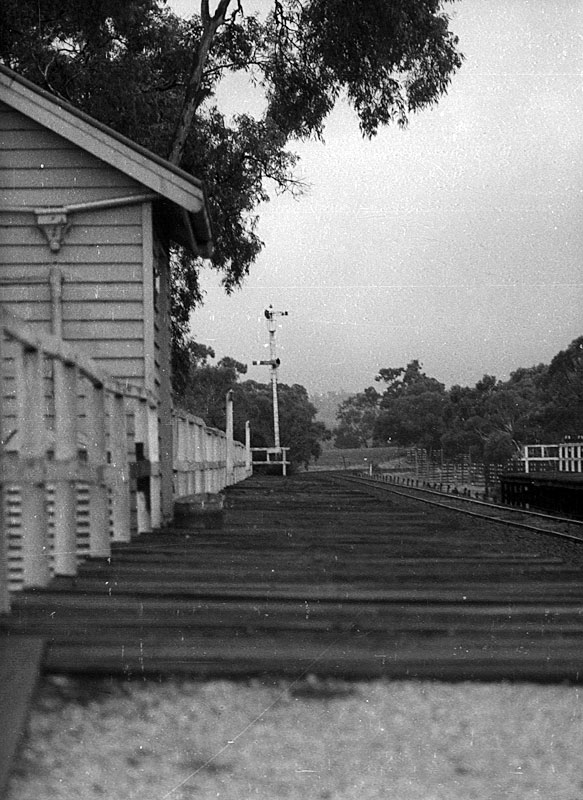
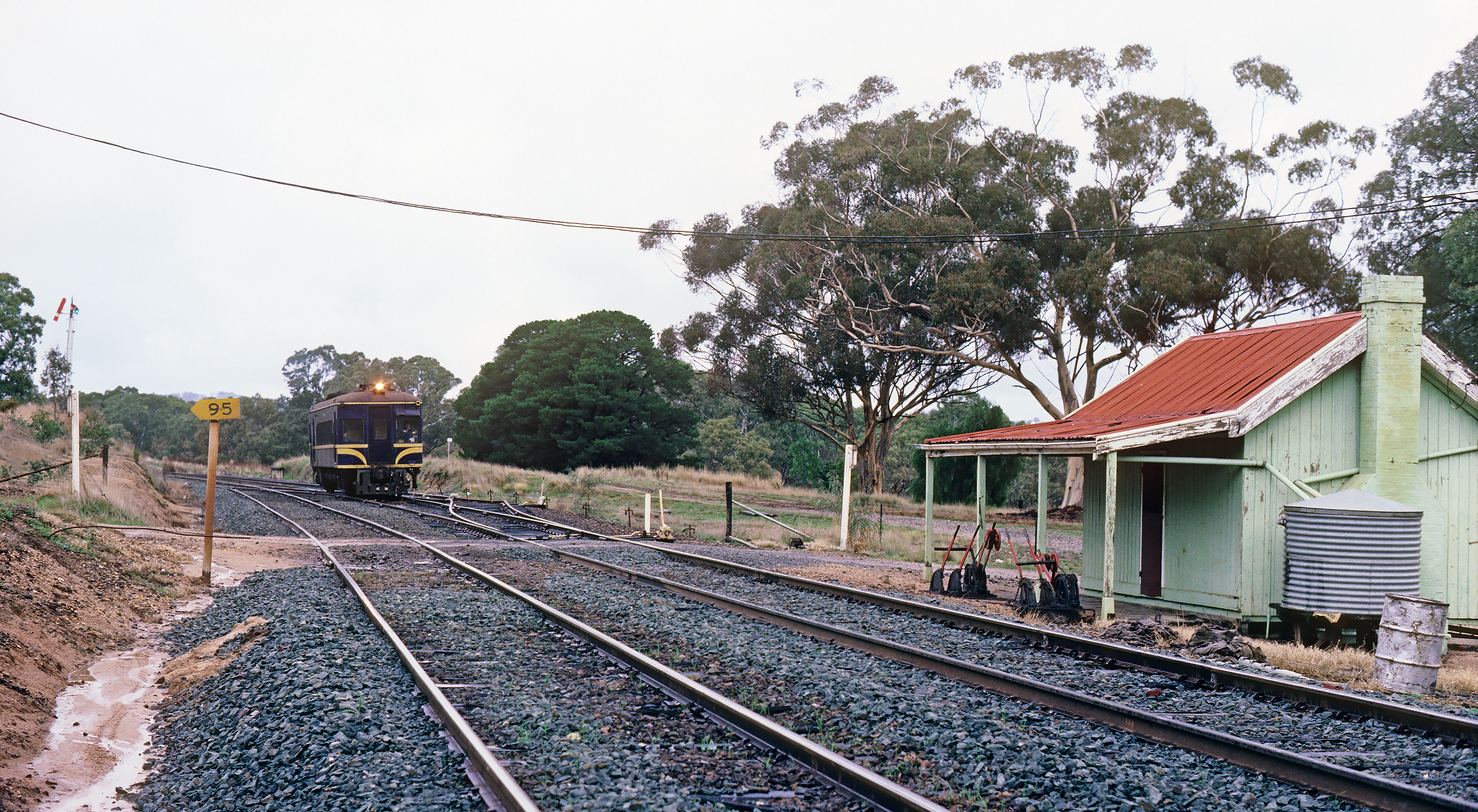
ABOVE: DERM number 63 passes through Ravenswood with an enthusiest special bound for Bridgewater. May 16, 1987.
(Photograph courtesy of Frank Jones collection)

ABOVE: an extract from a 1904 VR plan

Feel free to email me with any corrections or comments
Page modified Apr 10, 2022